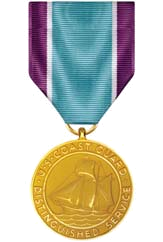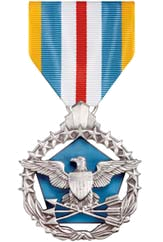Silver Star — Military Decorations
Silver Star Medal and Ribbon Design Images

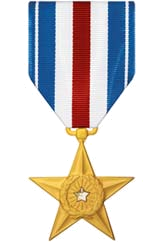
The Silver Star is a gold five-pointed star, 1 1/2 inches (38 mm) in circumscribing diameter with a laurel wreath encircling rays from the center and a 3/16 inch (4.8 mm) diameter silver star superimposed in the center. The pendant is suspended from a rectangular shaped metal loop with rounded corners. The reverse has the inscription FOR GALLANTRY IN ACTION.
What is the Silver Star Decoration?
The ribbon is 1 3/8 inches (35 mm) wide and consists of the following stripes: 7/32 inch (5.6 mm) Old Glory red (center stripe); proceeding outward in pairs 7/32 inch (5.6 mm) white; 7/32 inch (5.6 mm) ultramarine blue; 3/64 inch (1.2 mm) white; and 3/32 inch (2.4 mm) ultramarine blue.
The United States military sorts decorations into categories called Classes and Types. The Silver Star medal is classified as a Personal Decoration of the type Distinguished Service Medal.
How Do You Earn the Silver Star?
The Silver Star, officially known as the Silver Star Medal, is the United States military's third-highest decoration for valor in combat. It is awarded primarily to members of the United States Armed Forces for gallantry in action against an enemy of the United States.
The Silver Star is awarded for gallantry that does not meet the requirements for higher valor awards: the Distinguished Service Cross, the Navy Cross, or the Air Force Cross. The action must have taken place while engaged in combat against an enemy of the United States in which the United States is not a belligerent party.
Pilots are often considered eligible to receive the Silver Star upon becoming an ace, having five or more confirmed aerial kills. To receive the award, the pilot and, in multi-seat fighters, the weapons system officer or radar intercept officer, intentionally and successfully risking his life multiple times under combat conditions and emerging victorious. “During the Vietnam War, the last conflict to produce U.S. fighter aces: an Air Force pilot and two navigators/weapon systems officers (who were later retrained as Air Force pilots), a naval aviator and a naval flight officer/radar intercept officer who had achieved this distinction, were eventually awarded the Air Force Cross and Navy Cross, respectively, in addition to Silver Stars previously awarded for earlier aerial kills.”
Displaying the Silver Star
The Order of Precedence of the Silver Star is 12, and this precedence is used when placing the associated service ribbon on your uniform ribbon rack. You can see a full list of decorations in the order of precedence on the Decorations homepage.
The Silver Star is the successor award to the "Citation Star.” The Citation Star was established by an Act of Congress on July 9, 1918 during World War I. However, on July 19, 1932, the Secretary of War approved the conversion of the Citation Star to the Silver Star Medal while the original star was incorporated into the center of the medal.
Authorization for the Silver Star Medal was placed into law by an Act of Congress for the U.S. Navy on August 7, 1942 and an Act of Congress for the U.S. Army on December 15, 1942. The current statutory authorization for the medal is Title 10 of the United States Code, 10 U.S.C. § 3746 for the U.S. Army, 10 U.S.C. § 8746 for the U.S. Air Force, and 10 U.S.C. § 6244 for the U.S. Navy.
The U.S. Army and Air Force award the medal as the "Silver Star". The U.S. Navy, Marine Corps, and Coast Guard continue to award the medal as the "Silver Star Medal”. The award is worn after the Distinguished Service Medals and before the Defense Superior Service Medal.
Silver Star Associated Branches
Army |
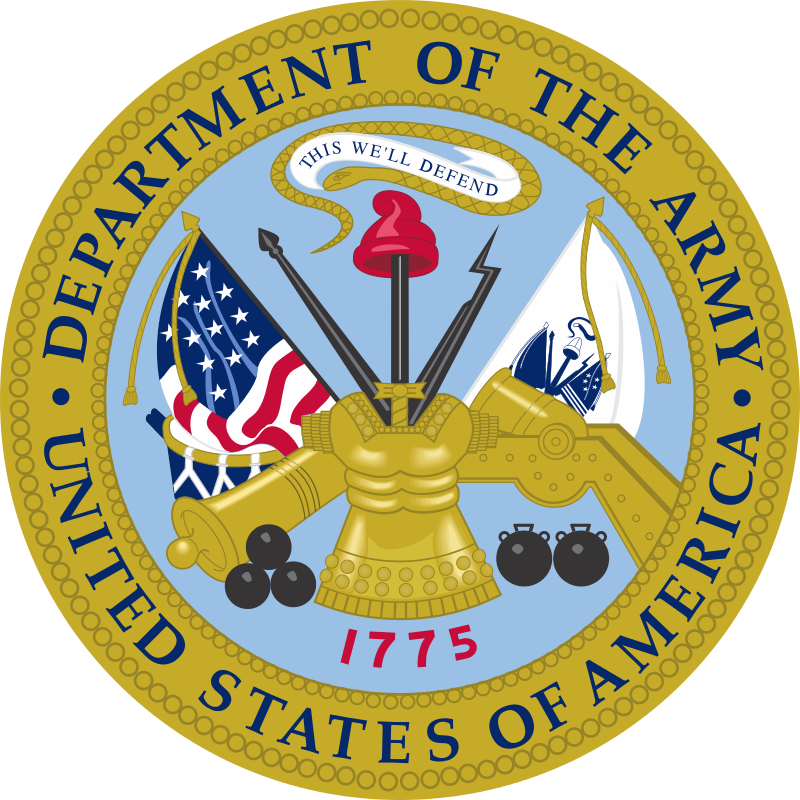 |
Navy |
 |
Marine Corps |
 |
Air Force |
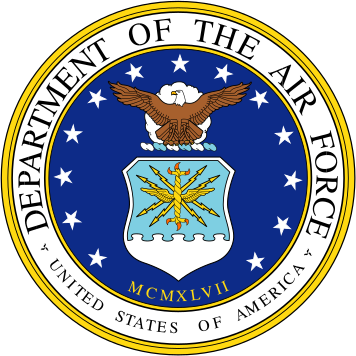 |
Coast Guard |
 |
Silver Star Associated Branches
Army |
 |
Navy |
 |
Marine Corps |
 |
Air Force |
 |
Coast Guard |
 |
Silver Star and the Stolen Valor Act
The Stolen Valor Act of 2013 is a federal law that makes it illegal for any person to falsely claim to be the recipient of certain military awards, "with the intention of obtaining money, property, or other tangible benefit by convincing another that he or she received the award".This decoration is apart of the stolen valor









































































































































